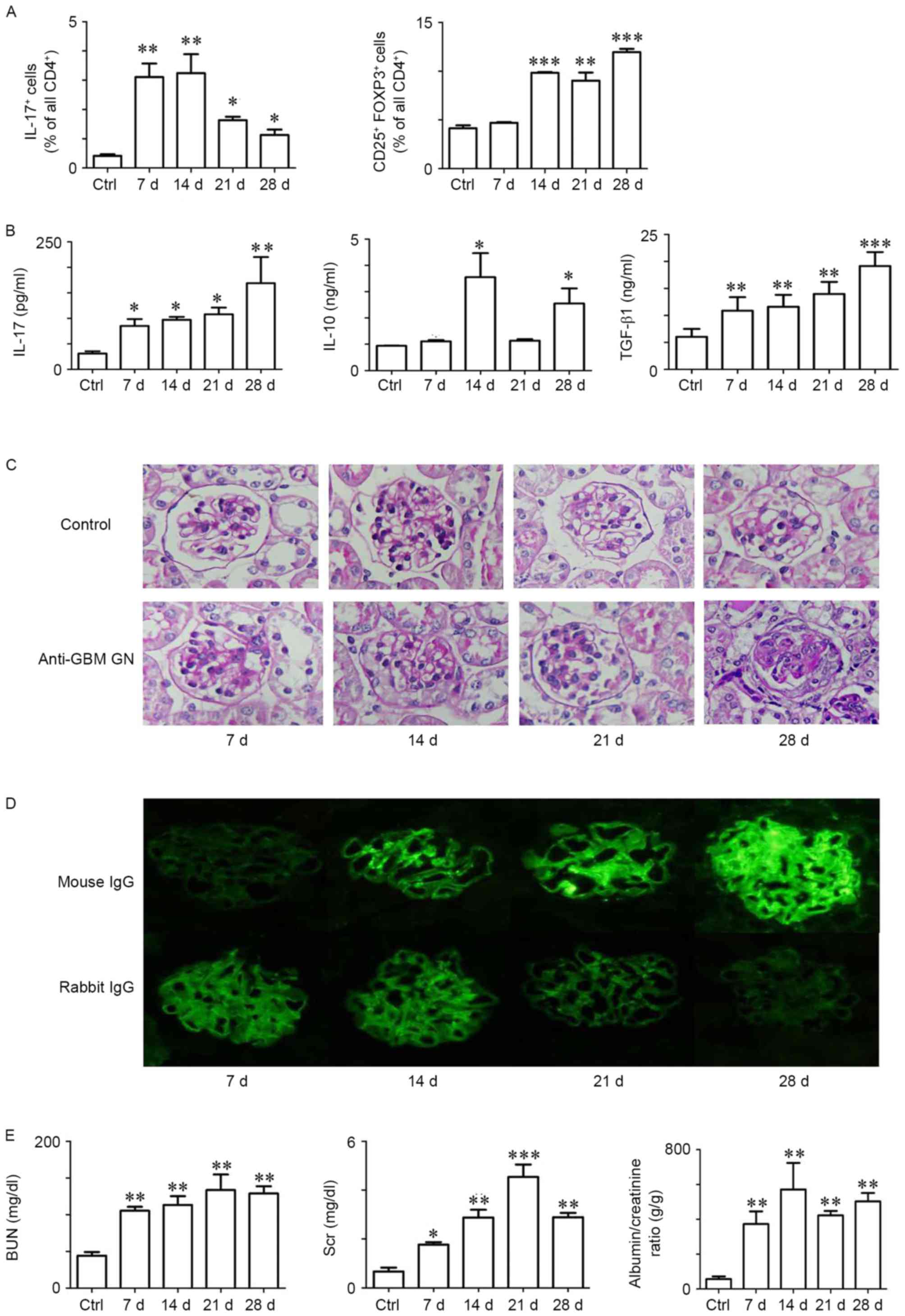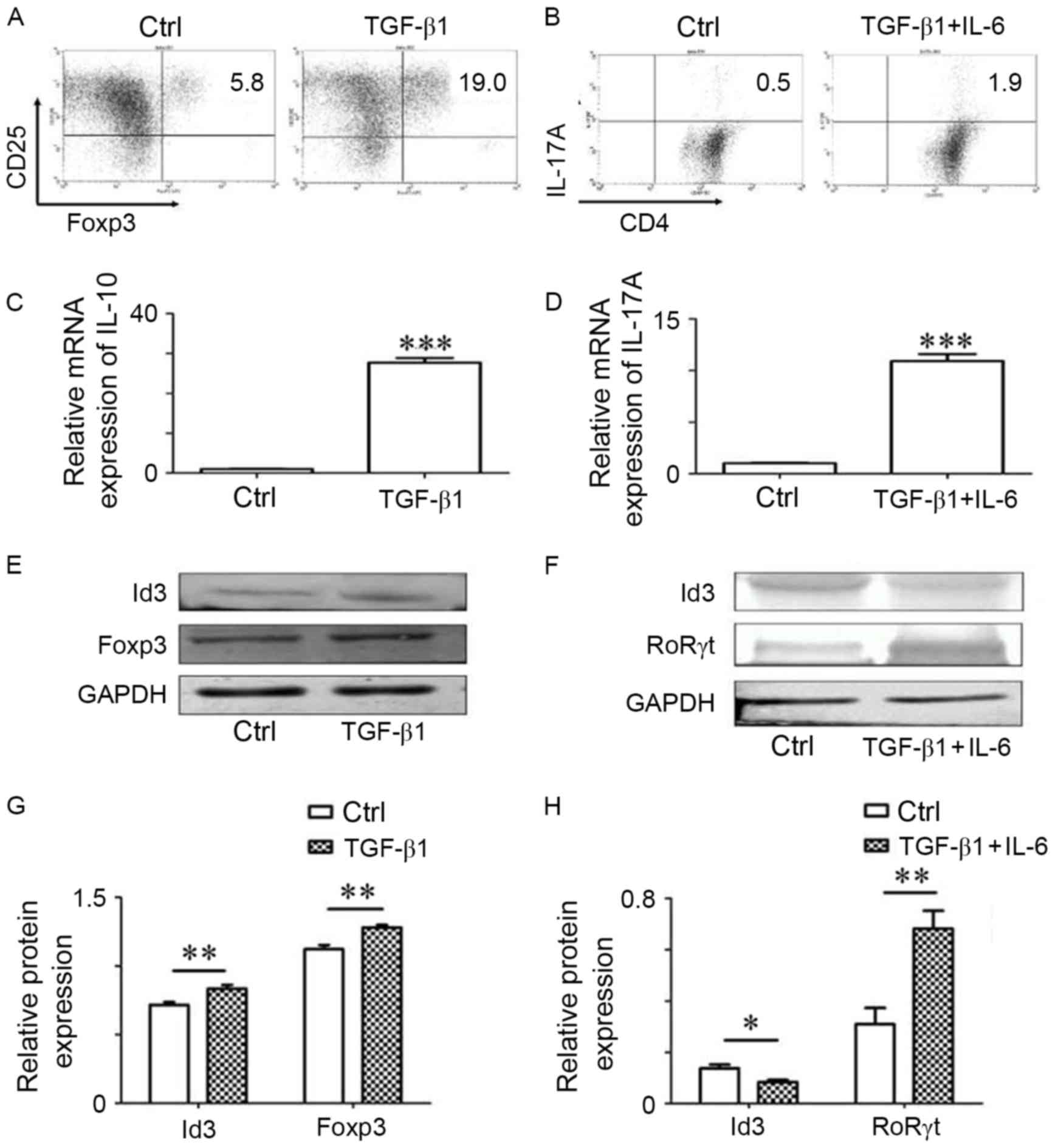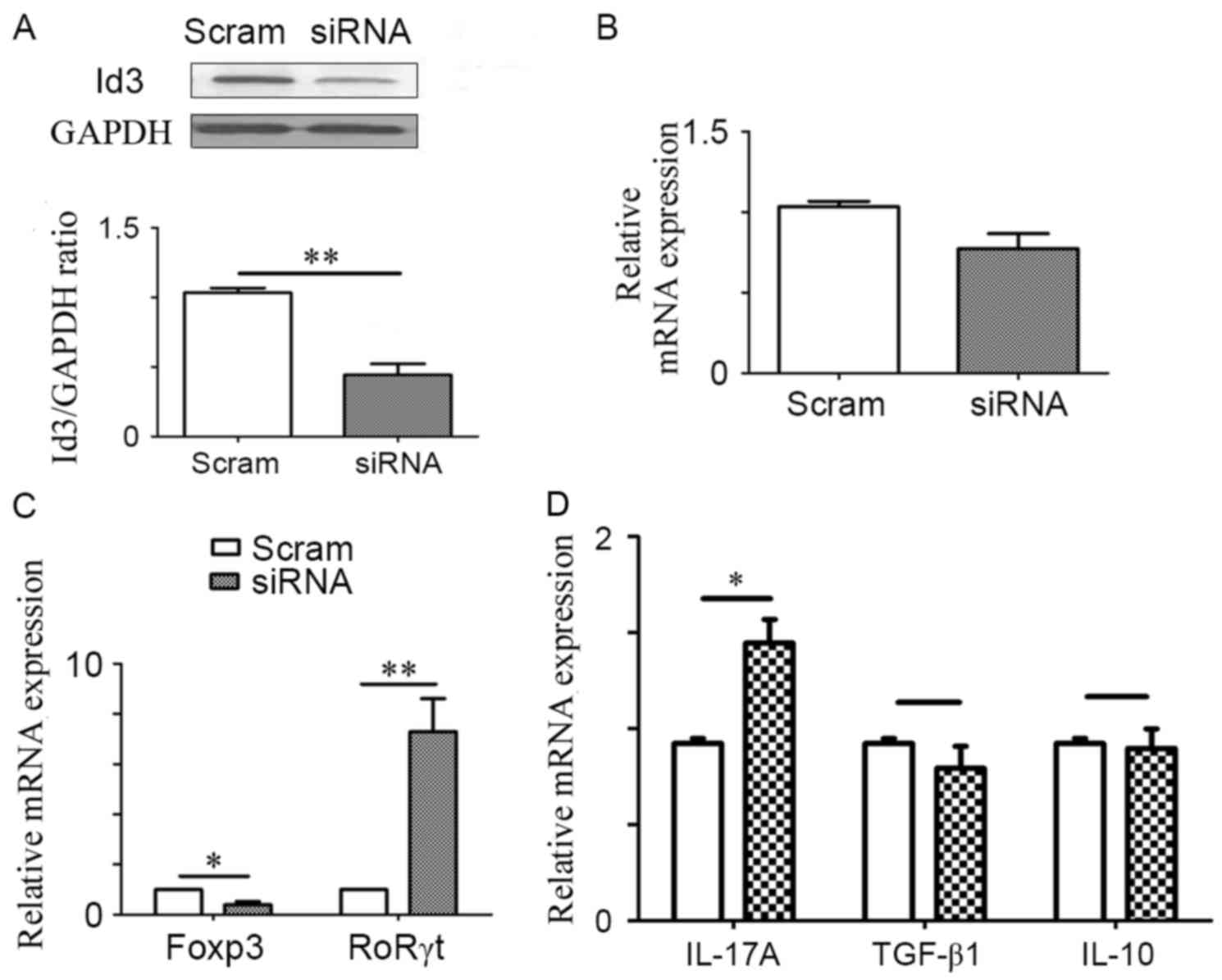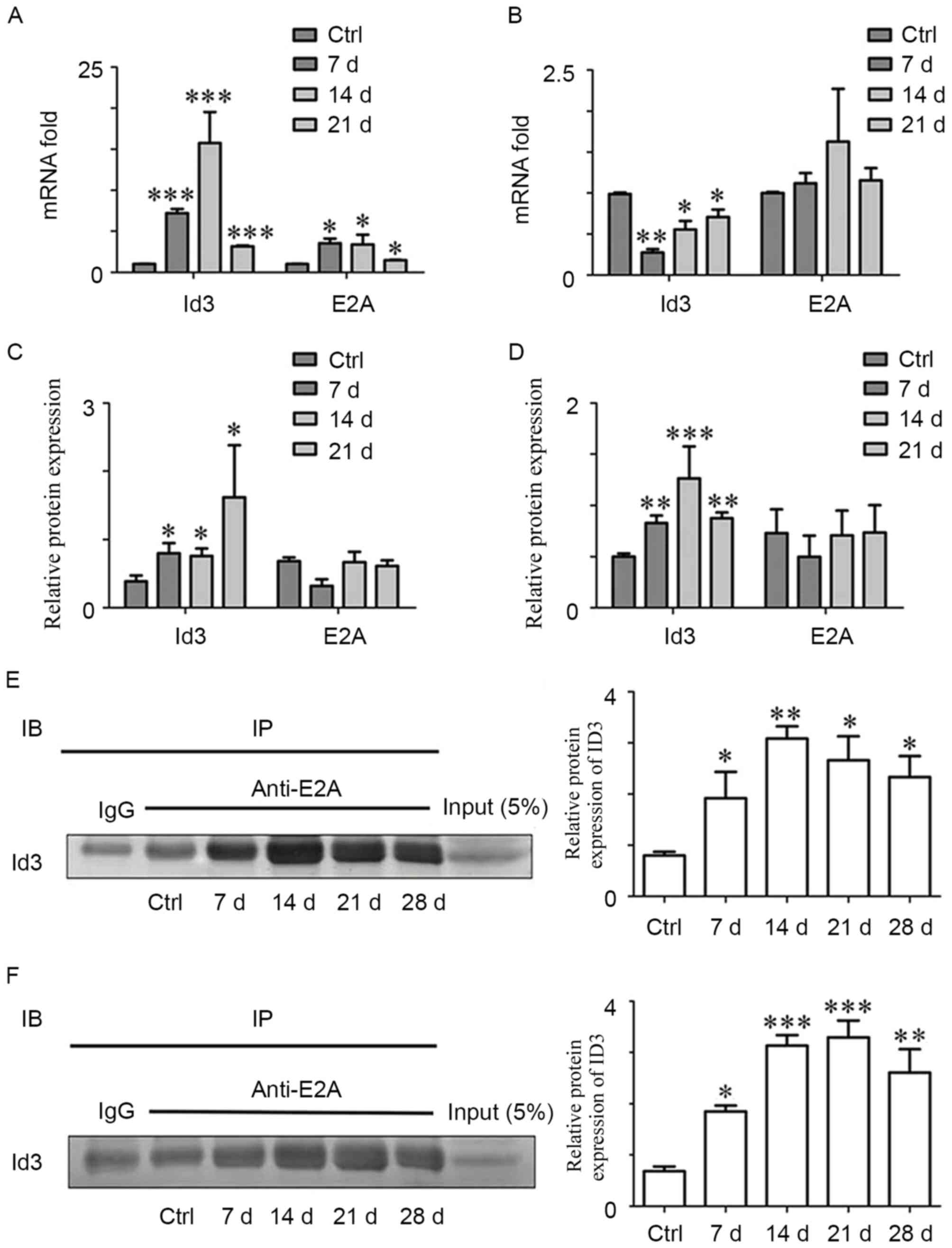|
1
|
Pedchenko V, Bondar O, Fogo AB, Vanacore
R, Voziyan P, Kitching AR, Wieslander J, Kashtan C, Borza DB,
Neilson EG, et al: Molecular architecture of the Goodpasture
autoantigen in anti-GBM nephritis. N Engl J Med. 363:343–354. 2010.
View Article : Google Scholar : PubMed/NCBI
|
|
2
|
Phoon RK, Kitching AR, Odobasic D, Jones
LK, Semple TJ and Holdsworth SR: T-bet deficiency attenuates renal
injury in experimental crescentic glomerulonephritis. J Am Soc
Nephrol. 19:477–485. 2008. View Article : Google Scholar : PubMed/NCBI
|
|
3
|
Tipping PG and Holdsworth SR: T cells in
crescentic glomerulonephritis. J Am Soc Nephrol. 17:1253–1263.
2006. View Article : Google Scholar : PubMed/NCBI
|
|
4
|
Zhang Q, Luan H, Wang L, He F, Zhou H, Xu
X, Li X, Xu Q, Niki T, Hirashima M, et al: Galectin-9 ameliorates
anti-GBM glomerulonephritis by inhibiting Th1 and Th17 immune
responses in mice. Am J Physiol Renal Physiol. 306:F822–F832. 2014.
View Article : Google Scholar : PubMed/NCBI
|
|
5
|
Hünemörder S, Treder J, Ahrens S,
Schumacher V, Paust HJ, Menter T, Matthys P, Kamradt T,
Meyer-Schwesinger C, Panzer U, et al: TH1 and TH17 cells promote
crescent formation in experimental autoimmune glomerulonephritis. J
Pathol. 237:62–71. 2015. View Article : Google Scholar : PubMed/NCBI
|
|
6
|
Mosmann TR, Cherwinski H, Bond MW, Giedlin
MA and Coffman RL: Two types of murine helper T cell clone. I.
Definition according to profiles of lymphokine activities and
secreted proteins. J Immunol. 136:2348–2357. 1986.PubMed/NCBI
|
|
7
|
Harrington LE, Hatton RD, Mangan PR,
Turner H, Murphy TL, Murphy KM and Weaver CT: Interleukin
17-producing CD4+ effector T cells develop via a lineage distinct
from the T helper type 1 and 2 lineages. Nat Immunol. 6:1123–1132.
2005. View
Article : Google Scholar : PubMed/NCBI
|
|
8
|
Sakaguchi S, Sakaguchi N, Asano M, Itoh M
and Toda M: Immunologic self-tolerance maintained by activated T
cells expressing IL-2 receptor alpha-chains (CD25). Breakdown of a
single mechanism of self-tolerance causes various autoimmune
diseases. J Immunol. 155:1151–1164. 1995.PubMed/NCBI
|
|
9
|
Kitching AR and Holdsworth SR: The
emergence of TH17 cells as effectors of renal injury. J Am Soc
Nephrol. 22:235–238. 2011. View Article : Google Scholar : PubMed/NCBI
|
|
10
|
Fehérvari Z and Sakaguchi S: CD4+ Tregs
and immune control. J Clin Invest. 114:1209–1217. 2004. View Article : Google Scholar : PubMed/NCBI
|
|
11
|
Barbi J, Pardoll D and Pan F: Metabolic
control of the Treg/Th17 axis. Immunol Rev. 252:52–77. 2013.
View Article : Google Scholar : PubMed/NCBI
|
|
12
|
Campbell DJ and Koch MA: Phenotypical and
functional specialization of FOXP3+ regulatory T cells. Nat Rev
Immunol. 11:119–130. 2011. View
Article : Google Scholar : PubMed/NCBI
|
|
13
|
Yang XO, Nurieva R, Martinez GJ, Kang HS,
Chung Y, Pappu BP, Shah B, Chang SH, Schluns KS, Watowich SS, et
al: Molecular antagonism and plasticity of regulatory and
inflammatory T cell programs. Immunity. 29:44–56. 2008. View Article : Google Scholar : PubMed/NCBI
|
|
14
|
Zhu J, Yamane H and Paul WE:
Differentiation of effector CD4 T cell populations (*). Annu Rev
Immunol. 28:445–489. 2010. View Article : Google Scholar : PubMed/NCBI
|
|
15
|
Lee YK, Mukasa R, Hatton RD and Weaver CT:
Developmental plasticity of Th17 and treg cells. Curr Opin Immunol.
21:274–280. 2009. View Article : Google Scholar : PubMed/NCBI
|
|
16
|
Norton JD: ID helix-loop-helix proteins in
cell growth, differentiation and tumorigenesis. J Cell Sci.
113:3897–3905. 2000.PubMed/NCBI
|
|
17
|
Nakatsukasa H, Zhang D, Maruyama T, Chen
H, Cui K, Ishikawa M, Deng L, Zanvit P, Tu E, Jin W, et al: The
DNA-binding inhibitor Id3 regulates IL-9 production in CD4(+) T
cells. Nat Immunol. 16:1077–1084. 2015. View Article : Google Scholar : PubMed/NCBI
|
|
18
|
Bain G, Cravatt CB, Loomans C,
Alberola-lla J, Hedrick SM and Murre C: Regulation of the
helix-loop-helix proteins, E2A and ID3, by the Ras-ERK MAPK
cascade. Nat Immunol. 2:165–171. 2001. View
Article : Google Scholar : PubMed/NCBI
|
|
19
|
Pan L, Sato S, Frederick JP, Sun XH and
Zhuang Y: Impaired immune responses and B-cell proliferation in
mice lacking the ID3 gene. Mol Cell Biol. 19:5969–5980. 1999.
View Article : Google Scholar : PubMed/NCBI
|
|
20
|
Murre C: Helix-loop-helix proteins and
lymphocyte development. Nat Immunol. 6:1079–1086. 2005. View Article : Google Scholar : PubMed/NCBI
|
|
21
|
Maruyama T, Li J, Vaque JP, Konkel JE,
Wang W, Zhang B, Zhang P, Zamarron BF, Yu D, Wu Y, et al: Control
of the differentiation of regulatory T cells and T(H)17 cells by
the DNA-binding inhibitor ID3. Nat Immunol. 12:86–95. 2011.
View Article : Google Scholar : PubMed/NCBI
|
|
22
|
Miyazaki M, Miyazaki K, Chen S, Itoi M,
Miller M, Lu LF, Varki N, Chang AN, Broide DH and Murre C: Id2 and
ID3 maintain the regulatory T cell pool to suppress inflammatory
disease. Nat Immunol. 15:767–776. 2014. View Article : Google Scholar : PubMed/NCBI
|
|
23
|
Kee BL, Quong MW and Murre C: E2A
proteins: Essential regulators at multiple stages of B-cell
development. Immunol Rev. 175:138–149. 2000. View Article : Google Scholar : PubMed/NCBI
|
|
24
|
Livak KJ and Schmittgen TD: Analysis of
relative gene expression data using real-time quantitative PCR and
the 2(-Delta Delta C(T)) method. Methods. 25:402–408. 2001.
View Article : Google Scholar : PubMed/NCBI
|
|
25
|
Jones ME and Zhuang Y: Acquisition of a
functional T cell receptor during T lymphocyte development is
enforced by HEB and E2A transcription factors. Immunity.
27:860–870. 2007. View Article : Google Scholar : PubMed/NCBI
|
|
26
|
Le Hir M: Histopathology of humorally
mediated anti-glomerular basement membrane (GBM) glomerulonephritis
in mice. Nephrol Dial Transplant. 19:1875–1880. 2004. View Article : Google Scholar : PubMed/NCBI
|
|
27
|
Abbas AK, Murphy KM and Sher A: Functional
diversity of helper T lymphocytes. Nature. 383:787–793. 1996.
View Article : Google Scholar : PubMed/NCBI
|
|
28
|
Tipping PG, Huang XR, Qi M, Van GY and
Tang WW: Crescentic glomerulonephritis in CD4- and CD8-deficient
mice. Requirement for CD4 but not CD8 cells. Am J Pathol.
152:1541–1548. 1998.PubMed/NCBI
|
|
29
|
Huang XR, Tipping PG, Shuo L and
Holdsworth SR: Th1 responsiveness to nephritogenic antigens
determines susceptibility to crescentic glomerulonephritis in mice.
Kidney Int. 51:94–103. 1997. View Article : Google Scholar : PubMed/NCBI
|
|
30
|
Robertson J, Wu J, Arends J, Zhou C,
Adrogue HE, Chan JT and Lou Y: Spontaneous recovery from early
glomerular inflammation is associated with resistance to anti-GBM
glomerulonephritis: Tolerance and autoimmune tissue injury. J
Autoimmun. 30:246–256. 2008. View Article : Google Scholar : PubMed/NCBI
|
|
31
|
Rivera RR, Johns CP, Quan J, Johnson RS
and Murre C: Thymocyte selection is regulated by the
helix-loop-helix inhibitor protein, ID3. Immunity. 12:17–26. 2000.
View Article : Google Scholar : PubMed/NCBI
|
|
32
|
Zhang F, Fuss IJ, Yang Z and Strober W:
Transcription of RORγt in developing Th17 cells is regulated by
E-proteins. Mucosal Immunol. 7:521–532. 2014. View Article : Google Scholar : PubMed/NCBI
|













